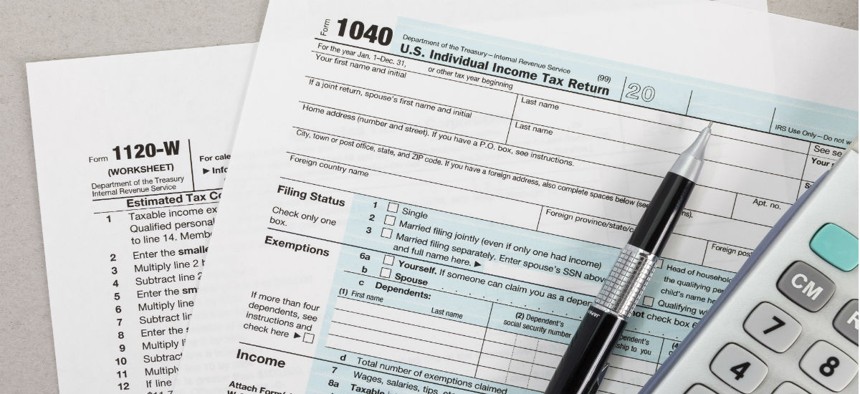IRS Told to Do Better Research Before Closing Taxpayer Help Offices
Effort to save money by curbing face-to-face counseling ignored Congress’s directive.
The number of Americans visiting the 359 Taxpayer Assistance Centers run by the Internal Revenue Service fell from 3.1 million in fiscal 2017 to 2.8 million in fiscal 2018, as the tax agency attempted to save money by closing some centers and encouraging virtual communication or online tax counseling.
But in selecting which bricks-and-mortar offices to shutter, the IRS neglected to follow Congress’s instructions for using geographic data to determine the best locations for continuing to serve less-trafficked parts of the country, according to an audit released on Monday by the Treasury Inspector General for Tax Administration.
IRS managers did not fully agree with the criticism.
Taxpayer Assistance Centers, often co-located with Social Security offices, are designed to help taxpayers who raise special tax issues or who simply prefer face-to-face counseling. Since November 2016, such taxpayers have been required to call the IRS appointment line to schedule an appointment, though staff can assist those who arrive unannounced as time permits. About half of taxpayer problems since 2017 have been resolved by telephone, thus sparing the taxpayer from having to travel, TIGTA noted.
Under the 2018 Consolidated Appropriations Act, Congress—its members concerned about losing offices in their districts—required the IRS to report to congressional committees on the steps taken to minimize closures. The tax agency fell behind on such reporting and failed to conduct a formal study on the impact of closing four centers. Nor did it fulfill the demand that it hold a public forum in the four affected communities six months before closing the centers, the report said.
The IRS “did not use its data‑driven Geographic Coverage Model to expand face-to-face assistance to new locations,” TIGTA wrote. The auditors’ model identified 28 underserved areas with a high number of taxpayers who are likely to seek face-to-face assistance—most of them low-income and living more than 30 miles from a center.
The tax agency is encouraging greater use of virtual service delivery (online video linkups, often in public libraries) and self-serve kiosks at the centers (for taxpayers who lack a computer) that help reduce costs of rent and staff time.
TIGTA recommended first that the IRS ensure completion of the impact studies on taxpayers’ ability to interact with the IRS and that public forums take place before a center is closed. And second, auditors recommended that IRS ensure use of the data from the Geographic Coverage Model before making decisions on relocations.
Kenneth Corbin, commissioner, Wage and Investment Division, said, “When a TAC must be closed, its closure does not eliminate face-to-face service from the community.” He cited past TIGTA data showing virtual service delivery to be user-friendly. Of the four assistance centers closed in 2018, three bricks-and-mortar facilities in low-traffic areas were replaced with virtual services at partner sites less than four miles from the original center, he said.
IRS did promise to use the Geographic Coverage Model data, but argued that it “will not provide meaningful data to determine co-located sites with the SSA or rural and underserved” areas.
“We disagree with TIGTA’s statement that management did not provide any documentation or analysis to support its business decision to open [virtual service delivery] sites in 38 locations,” Corbin wrote. He cited past procedures requiring signage, public comment, and notice to lawmakers, media and the Taxpayer Advocate Service, but noted that the IRS is extending the notice time from 60 to 90 days.
TIGTA called the virtual distance services insufficiently used, an indicator that the sites are “not optimally located.” And the watchdog asserted that the “planned corrective actions will not address the deficiencies cited in the report.”
NEXT STORY: How Passion For Your Job Can Backfire




